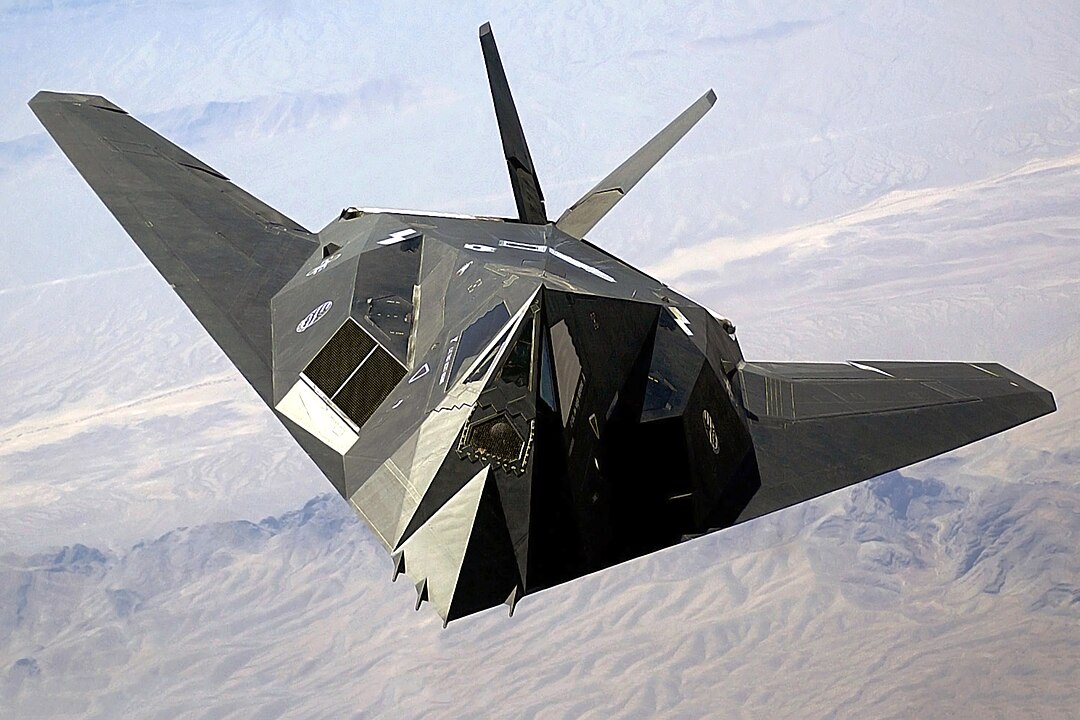
The F-117 Nighthawk, created by Lockheed’s Skunk Works, was a revolutionary aircraft that transformed aerial combat with its stealth features. Operating from 1983 until its retirement in 2008, it was a key part of the USAF history, showcasing the use of stealth tech in modern warfare.

In response to an Air Force request for an undetectable aircraft, engineers utilized advanced materials and design techniques to develop the world’s inaugural stealth aircraft.

The Nighthawk’s first flight took place on June 18, 1981, marking the start of a new era in tactical aviation. By October 1983, the 4450th Tactical Group, eventually rebranded as the 37th Tactical Fighter Wing, attained its initial operating capability.

The F-117A’s combat debut took place during Operation Just Cause on December 19, 1989, with two aircraft from the 37th TFW attacking military targets in Panama. This marked a pivotal moment when stealth technology was first tested under actual combat conditions.

Subsequently, the Nighthawk played a significant role in Operation Desert Shield/Storm in 1990-1991. Deploying from a base in Saudi Arabia, the 415th and 416th squadrons executed 1,271 sorties with an impressive 80 percent mission success rate. Notably, throughout the campaign, the aircraft suffered no losses or battle damage.

The F-117’s unique design, featuring angular panels and a radar-absorbent external coating, was instrumental in its radar-evading capabilities.

It was born out of a collaboration between the Skunk Works team and the USAF following a stealth demonstrator project known as Have Blue. Skunk Works’ rapid and secretive development of the aircraft culminated in it winning the contract for the Nighthawk.

Despite achieving initial operational capability in 1983, the F-117 remained shrouded in secrecy for many years. It was not until November 1988 that the program was publicly acknowledged, and in 1990 it made its first formal public appearance.

The aircraft’s first public viewing at Nellis Air Force Base was met with thousands of spectators eager to catch a glimpse of the once-elusive aircraft.

The F-117’s legacy was recognized with the prestigious Collier Trophy in 1989, affirming its significant contribution to aeronautics.

However, the aircraft did not remain invulnerable; on March 27, 1999, one F-117 was shot down over Serbia during combat, marking the only loss of the aircraft in its operational history.

Despite its official retirement in 2008, the F-117 has continued to participate in various capacities, including exercises and dissimilar air combat training.

The USAF has maintained several airframes in flyable condition for test and training support through at least 2034. In recent years, the Nighthawk has been seen operating alongside other aircraft, including early F-35As and ANG F-15s, contributing to advanced threat-representative training.

Throughout its service life, the F-117 has been a testament to the value of stealth technology in evading enemy radar and delivering precision strikes.

It paved the way for subsequent stealth platforms and continues to influence the evolution of aerial warfare tactics. The remaining fleet, stored at Tonopah Test Range in Nevada, stands as a powerful symbol of the USAF’s innovation and adaptability in the ever-changing theater of war.
Relevant articles:
– Lockheed F-117A Nighthawk
– F-117 Nighthawk
– Air & Space Forces Magazine

